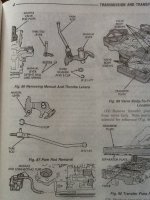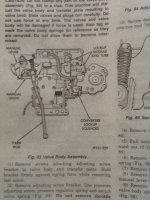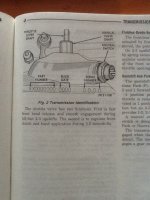I should have posted this before , forgot in my haste. The fuel pump ( mechanical ) needs to be checked as far as pressure is concerned. To check it , you'll need a vacuum gauge with a fuel pump adapter ( a rubber boot) . You place the gauge and rubber boot on the suction port ( where the fuel line from fuel tank goes) and crank the engine ( disable the ignition for this test ) . A good reading is usually between 5-7 psi . Anything less is poor. If you find you'll need one , it's not difficult to change , two bolts mount it and two ( or three ) lines. When loosening the bolts , if resistance is found , turn the crankshaft by hand using the harmonic balancer bolt until pressure is off the mechanical arm . A fuel pump eccentric which can either be a camshaft lobe (Chevy engines) or an offset round cam like part that bolts to the upper timing gear pumps the mechanical arm . You just want to turn the engine until the "bump" is past the arm. Then bolt the new one in. You may want to pack grease in the pump,where the mechanical arm fastens to the pump . Chevy pumps were recommended for this. Off the top of my head , carb problems usually are because of dirt , fuel logged float causing rich comdition , and worn or stuck parts internally. Power valves in motorcraft carbs blow out and power Pistons in carbs like the BBD get stuck or the vacuum port gets carbonated. Please , before buying a carb , diagnose the fuel system first. Folks have put new carburetors on and forgot to replace a fuel filter and blame the carb , for instance. Hope this helps .



